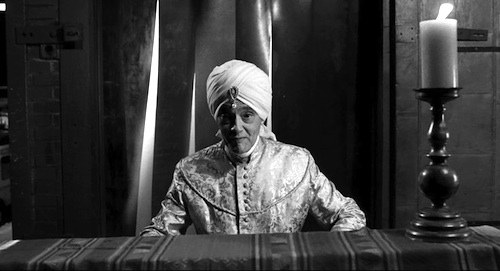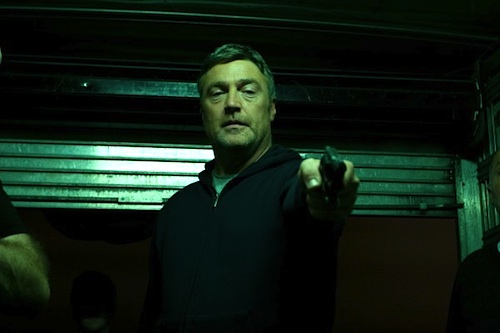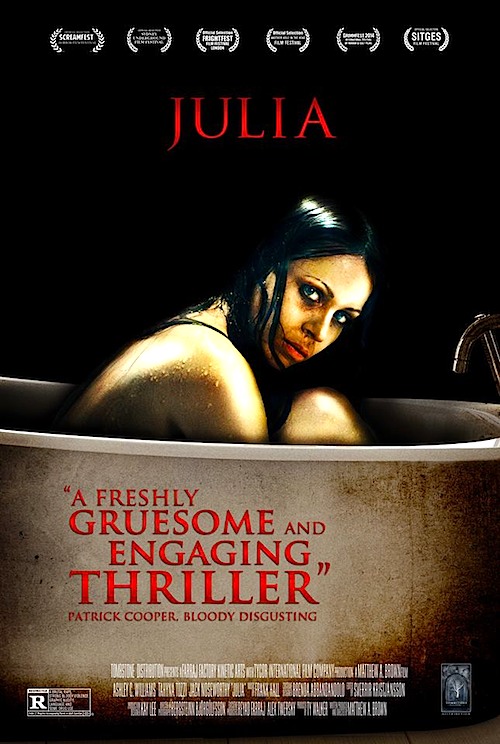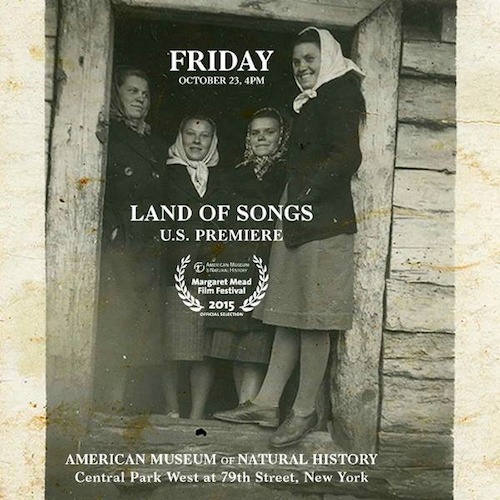By Joe Bendel. Korla Pandit’s stage persona was sort of a weird combination of Sun Ra and Liberace, but he predated them both. In fact, Pandit somewhat resented the latter for moving in on his act, with some justification. He was the musical prodigy son of a Brahmin priest and a French opera singer, who found fame on American television combining his keyboard wizardry with his seductive stare—except, maybe he wasn’t. So who the heck was he? The truth will be revealed in John Turner & Eric Christensen’s Korla, which screens this Thursday and Saturday at the Smith Rafael Film Center.
Even if you know Pandit’s secret, it is still fascinating to watch Turner & Christensen chronicle his career and competing narratives. The story is already in the public record thanks to journalist RJ Smith, who covered Pandit extensively in the Los Angeles press and touched on his strange but true biography in the terrific book The Great Black Way, a history of the Central Avenue music scene. Smith will be our primary guide through this tale, but we will not spoil it prematurely for those uninitiated in Panditry.
Frankly, it seems astounding today that LA’s KTLA would program fifteen minutes of music from Pandit every weekday afternoon, with absolutely no talking. Apparently, the station manager lacked confidence in Pandit’s voice, so he had to do all his talking with his eyes. Clearly, it worked, because Pandit became a major celebrity. Unfortunately, that Liberace kid eventually took over his time slot, thus commencing the classic show business cycle of ups and downs.
Still, Pandit hung on pretty darn well. He recorded extensively for Fantasy Records during its Dave Brubeck-Cal Tjader glory years and became something of a spiritual guru in his own right. In fact, one can easily imagine how his slightly World Music-ish keyboard stylings might have contributed to the rise of the various New Age movements that took root in California (and were so memorably parodied in Serial). Yet, there is much, much more to the story.

To their credit, Turner & Christensen understand Pandit’s assumed backstory is just as important as his true history. After all, he clearly did his best to become the Korla Pandit we thought we knew. However, they also fully explore the significance of who he really was and why he felt compelled to make certain choices. Despite his Indian identity, there is indeed something classically American about his drive to reinvent himself. They also give his music all due respect, celebrating the “exotic” in exotica, rather than trying to score snarky points at his expense.
Pandit’s story is absolutely fascinating and the assembled archival film clips, audio recordings, and still photos of the unclassifiable musician represent the essence of retro-cool. Any documentary about Pandit would be wildly cinematic, because how could it not be? However, Turner & Christensen and Smith tell his narratives with appropriate sensitivity and rigorously researched authority. They did right by their subject, because viewers will come to understand where he came from and want to hear more of his unique sound. Enthusiastically recommended, Korla screens this Thursday (10/29) and Saturday (10/31) at the Smith Rafael Film Center, with further screenings scheduled across the country, including the St. Louis International Film Festival on November 15th.
LFM GRADE: A
Posted on October 29th, 2015 at 2:52pm.




